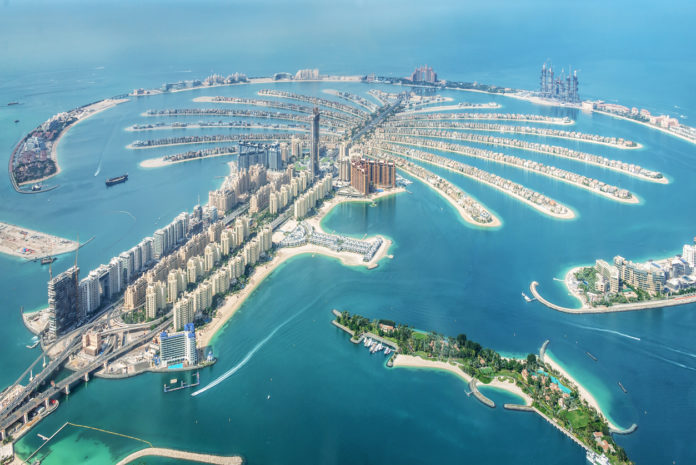When it comes to discussing the most stylish locations on the planet, it is absolutely vital that some reference is made to Dubai. The city in the United Arab Emirates is simply a stunning area, with it boasting an incredible skyline as well as state-of-the-art facilities which have to be seen to be believed.
A host of technologies have been used to bring some of Dubai’s most famous structures to life, and here we take a look at just a few of them, beginning with its world-renowned man-made islands.
Building an island
A real wonder of the modern world, the Palm Jumeirah development lies on Dubai’s coastline and has become an iconic example of the luxurious, first-class facilities and infrastructure which the city is now synonymous with.
It is home to a host of exciting attractions including the Atlantis, The Palm hotel and The Lost Chambers Aquarium. Furthermore, a study by Bayut last year revealed that it is not only the most sought-after area in the city for buying villas, but also fourth when it comes to purchasing apartments. But just how did this completely artificial archipelago spring to life in such a way?
As Travelzoo outlines, it undoubtedly took a whole lot of effort. Foundations were formed from seven million tonnes of rock, with 120 million cubic metres of sand being dredged to form the islands. Furthermore, GPS technology was needed to carefully and accurately plot the position of the trunk and the fronds which branch from it, while vibro-compaction technology was then used to ensure the land was ready for construction. The project first began in 2001 and almost two decades later it is fair to say that all of that effort was worth it.
Reaching new heights
Another impressive wonder in Dubai is the Burj Khalifa; the tallest building in the world which stands at more than 820 metres high. The structure has dominated the city’s skyline since its launch in 2010 and is home to a stunning observation deck and the incredible luxury of an Armani Hotel. However, while it has helped the city reach new heights, its story starts deep underground.
As ConstructionWeekOnline explains, the tower is supported by a large concrete mat around 3.7 metres thick which needed to be created in four separate pours. Furthermore, the mat itself is supported by 192 reinforced concrete piles which run to a depth of around 50 metres, with the Bauer BG40 being used in the process. In order to then start building the tower up, BASF had to develop a special mix of concrete that could be pumped to more than 600 metres without segregating.
The Burj Al Arab is another jaw-dropping landmark in Dubai and it is also one of the tallest hotels in the world. The building’s famous sail design was regarded as a technical challenge during construction, with it featuring a special Teflon-coated woven fibreglass screen. The project marked the first time that such technology had been used vertically to such an extent in any building in the world.
An incredible city
Dubai is undoubtedly one of the most incredible cities on the planet right now, with each of its most famous structures boasting an equally intriguing tale about their creation.
From the Burj Khalifa to the Palm Jumeirah, the city is a real testament to what can now be achieved in modern engineering and construction.






